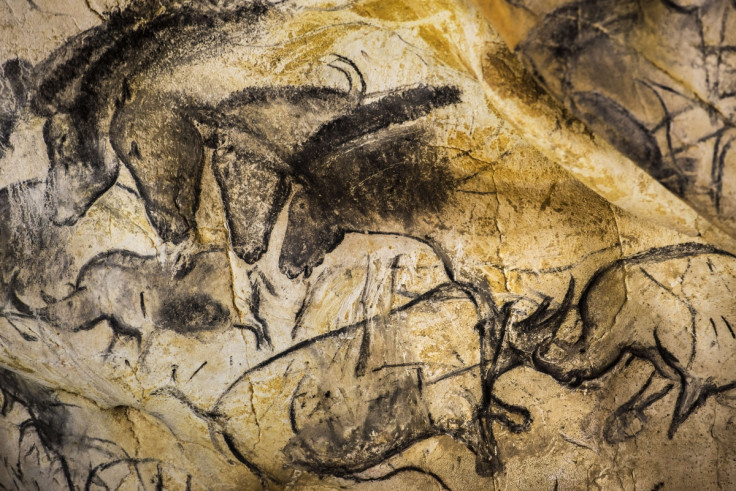France: Chauvet cave paintings depict 36,000-year-old volcanic eruption

Stone paintings found in Chauvet cave in southern France could be the oldest known depiction of a volcanic eruption, a new study suggests. The paintings portray the occurrence of a volcanic activity 35km (21.75 miles) northwest of the cave about 36,000 years ago.
The study published in the 8 January issue of the journal PLoS ONE suggests that the dating of the volcanic eruption and the cave paintings overlap. The cave dwellers may have etched the eruption at around the same time as nearby volcanoes spewed lava into the sky, researchers said referring to "several peculiar spray-shape signs" found among the paintings and engravings in the cave.
The eruption was "visible from the hills above the cave entrance", geoscientist Sebastien Nomade at the University of Paris-Saclay, lead researcher and author of the report, said in the study. "Humans are likely to have witnessed one or several eruptions and depicted them using these complex signs."
Located in a limestone plateau in Ardeche river area about 665km south of Paris, Chauvet cave is a haven for prehistoric art, having some of the world's earliest known and best-preserved figurative drawings.
The researchers said that the distinctive design of spray-shape signs was reminiscent of typical lava fountains associated with Strombolian eruptions, named for Italy's Stromboli volcano. The drawings also hint at the eruption's strength, according to researchers.
"The observation that drawing these signs erased pre-existing animal figures might arguably be interpreted as expressing the power of the volcanic event," they said. The researchers added: "As there is no other example in prehistoric rock art of natural scenery, it is here perhaps the strength of the eruption image that might have inspired the Aurignacian (38000BC-29000BC) artists."
However, the authors insisted that considering the drawings as a depiction of volcanic activity was still the "most probable" hypothesis and that the signs would require further investigation.
According to researchers, a letter by Italian author Pliny the Younger describing the Plinian eruptions of 79AD and a mural excavated from the Neolithic ruins of Catalhoyuk in Turkey showing a 7500BC eruption of the now-inactive Mount Hasan are currently considered the oldest eruptions painted by a human hand. They said that the Chauvet cave's depiction can predate both the observations.
"The Chauvet is the cave of the artistic exceptions in terms of technique, themes, composition and visual innovations for the time period considered. It will not be surprising to find the first depiction of a volcanic eruption in human history among the ornamentations of this exceptional cave," the study concluded.
© Copyright IBTimes 2025. All rights reserved.






















